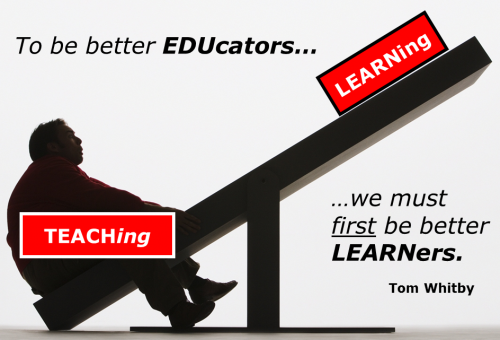Teaching and Learning part 10
There are students who come to class but only put in the least amount of effort. They do not create any problems or misbehave because all they want is to pass the course and move on to the next. They never pay attention to what is being taught because they do not view the course materials as something important to their career or their lives.
A student once told me: “I can understand arithmetic is necessary but why do we have to learn statistic? I do not see it is relevant to my life.” Students may not interested in learning a subject when they do not see the relevance of the materials being taught. As teachers, we must spend the time to explain WHY and HOW the subject will help them in their career or their lives, and not use the threat such as: “You must learn this because it is on the test.”
As teachers, we need to explain to the students why the material is important because it is the key to motivate them to learn. At the beginning of every lesson, before teaching the subject, I always start with why it is so important for them to know. I often use simple examples that are relevant to their career. For example, when teaching the data structure course, I explained: “Computer programs are comprised of two things: data and algorithms. The data structure is the way of storing and organizing information in a computer so that it can be retrieved and used productively. If you do not organize your data, how could your computer find and process the data? Imagine that you go to the library to find a textbook about machine learning. First, you have to go to the computer section, then to the algorithm section where you can find these machine learning books. If all books are organized randomly then how can you find the book that you want? Just like the librarian organizes all books into a particular section so you can find it, as a software engineer, you must also organize your data according to a structure so your program can process it efficiently.” Once students understand the reason for learning the subject (WHY), then I move to the material (WHAT).
Another technique that I often used to “un-interested” students is asking them to my office and discuss with them about their career. I start by asking: “What job or career can you think yourself doing by the time you graduate?” After they give me an answer, I continue: “What do you think you need to know to get that job?” By making them think about how the course subject is important to their future, some realize that they need to learn the materials well. Sometimes, I may challenge them: “If you are in a position to hire college graduates, and you have twenty candidates. They all have a degree then how would you select them? Would you select by random or by validation of their skills? If they come up with the validation answer, I would ask “How would you validate their skills?”
As teachers, we need to build a better relationship with students by showing them that we care. We need to understand their interests and motivation in learning the subject. Students who respect their teachers will likely to study harder as they do not want to disappoint their teachers. Today’s teaching is not just transferring knowledge but also guiding, mentoring and supporting students on HOW TO LEARN and develop the attitude of lifelong learning.
Sources
- Blogs of Prof. John Vu, Carnegie Mellon University
